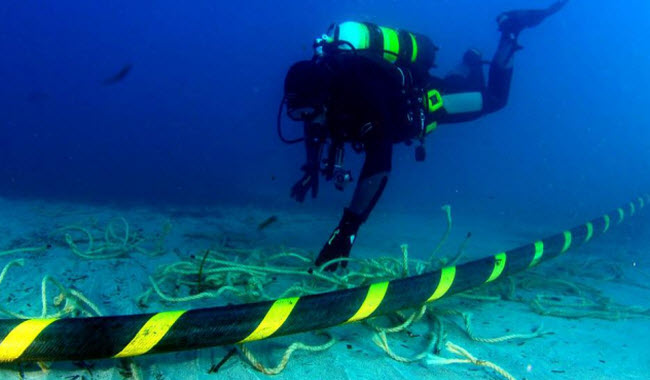Despite the technological advancements in satellite communications, these are still not sufficient to be fully relied upon by internet users worldwide. Therefore, physical connections are made through a network of undersea cables located at the bottom of the oceans, which are responsible for transmitting most of the data traffic, telephone calls, and even television broadcasts between different continents at speeds approaching the speed of light. These cables have enormous capacities, with each one capable of transmitting tens of terabytes of information per second. However, due to the current information wars between major powers, particularly the United States and Russia, attention has turned to these undersea cables, especially after Russian submarines were observed near them. This has led to concerns about whether these cables might be targeted for sabotage in the future.

Although the idea of sabotaging undersea cables is rare, history has shown that it is a possibility. For instance, during World War I, German forces conducted a raid on an undersea cable station on Fanning Island in the Pacific Ocean. Recently, there were speculations about deliberate sabotage that led to the cutting of undersea cables off the coast of Alexandria, Egypt, in 2008. This resulted in a 70% cut in internet services across the country, causing significant user disruption and substantial financial losses. Therefore, the notion of sabotaging undersea cables is in the minds of many nations in the event of conflicts with other countries, as it would only take disrupting a few sections to render the network completely out of service across vast areas for weeks or even months.

From this, it is clear that most issues faced by undersea cable systems are not technical but human. Beyond deliberate sabotage, disruptions could also result from local construction projects, boats dropping their anchors on them, or even collisions with submarines, which can cause significant disturbances. Consequently, the vulnerability of these cables has become a major concern in the media, which questions what would happen if these undersea cables were cut and whether we should worry about natural faults or sabotage by hostile powers or terrorist organizations. Experts’ responses are not entirely reassuring but also not pessimistic. They state that while any single cable is vulnerable to various risks, the cables have a larger capacity than the traffic they handle. Thus, when a disruption occurs, information is automatically rerouted through other cables. Therefore, a single cable failure is unlikely to have a noticeable impact. However, if multiple cables are sabotaged, there would be a real problem.

This does not mean that undersea cables are left entirely unprotected. The International Cable Protection Committee (ICPC) undertakes efforts to protect them, resulting in cables being covered with steel armor and buried under the seabed near shorelines where human threats are significant. This provides a reasonable level of protection. However, in deep waters, where most ships cannot reach the heart of the oceans and thus the cables, they are covered with only a thin polyethylene sheath. This is the best that can be done because monitoring all these undersea cables comprehensively is extremely difficult. Since the 19th century, telegraph companies have tried to achieve this but failed because the ocean is vast and the lines are too long. It would be impossible to stop every ship approaching important communication cables, as it would require creating very large restricted areas across the ocean, which would significantly disrupt maritime traffic and negatively impact the economy.
Therefore, we can say that the undersea cables we all depend on to send everything from emails to banking information across the seas remain largely unregulated and unprotected. This makes them susceptible to various disruptions, some of which may be natural due to deep-sea creatures or thermal vents, while others could be deliberate acts by humans. However, the vastness of the ocean provides some level of protection in many cases. Nevertheless, scientists argue that despite these challenges, it is difficult to rely on any alternative to undersea cables at present, such as satellites or Wi-Fi networks that transmit signals through the air. Fiber optic cables are the latest global communication technology, using light to encode information, and they remain unaffected by weather changes, offering faster and cheaper data transmission than other methods.
